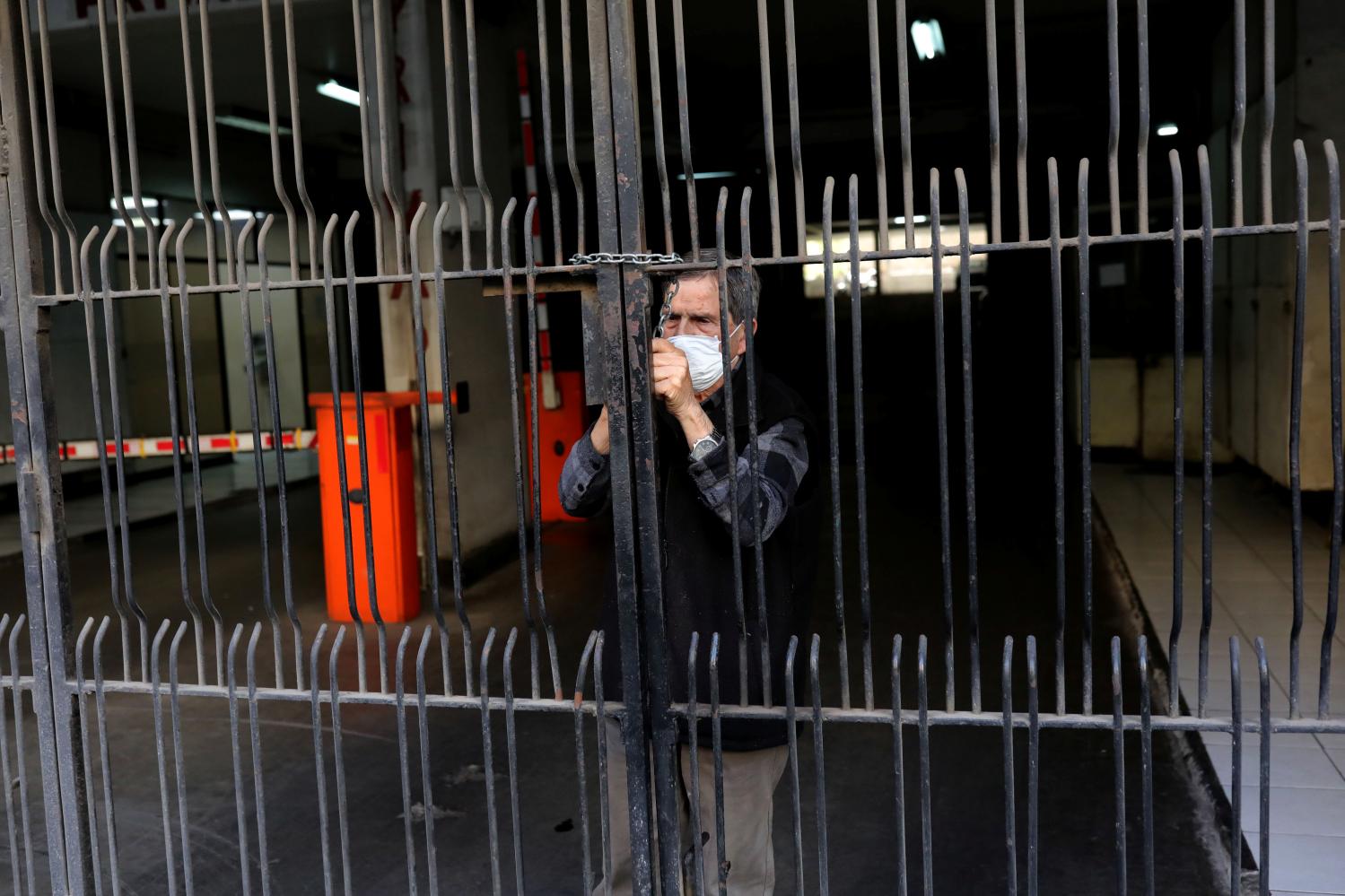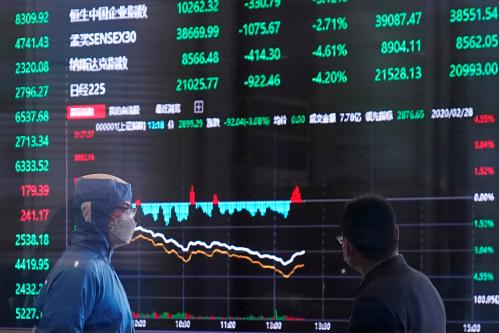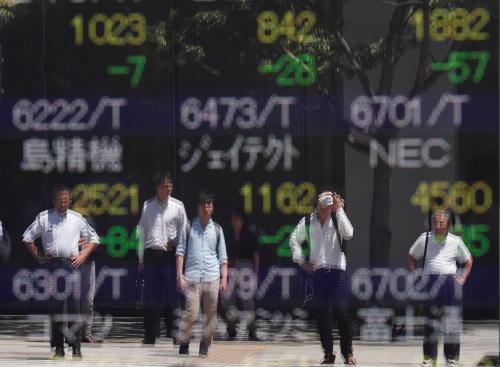In collaboration with the Financial Times (FT), Eswar Prasad of Brookings and Ethan Wu of Cornell have constructed a set of composite indexes which track the global economic recovery. The Tracking Indexes for the Global Economic Recovery (TIGER) is also featured in the Financial Times. A version of this commentary appeared in Project Syndicate.
The world economy is facing its most severe challenge of the postwar period. Economic activity, financial markets, and private sector confidence are all collapsing. The latest update of the Brookings-Financial Times Tiger index (Tracking Indexes for the Global Economic Recovery), based on the most recent available data and estimates of real-time data, shows the front end of this collapse and suggests that much worse is to come.
Will the present downturn prove to be sharp but relatively brief, with a snapback of economic activity once the COVID-19 pandemic curve is flattened? Or is the stage set for a deep and protracted global recession? The outcome depends on the trajectory of the pandemic, the responses from policymakers, and whether these are sufficient to contain the damage while rebuilding consumer and business confidence.
In any event, the combined public health and economic crisis makes a rapid recovery less likely. Demand has been ravaged, there are extensive disruptions to manufacturing supply chains, and a financial crisis is unfolding simultaneously. Unlike the 2008-09 crisis that was triggered by liquidity shortages in financial markets, the crisis now unfolding involves more fundamental solvency issues for many firms and industries beyond finance.
Click a country name below the Composite Index to view charts for the main TIGER indexes by country.
Another key difference is the worldwide nature of this shock. During and in the immediate aftermath of the global financial crisis, a few emerging markets such as China and India continued to register high growth, pulling the world economy along. This time, no economy is immune, eliminating the option of an export-driven recovery for any country. The economic collapse has increased deflationary and financial risks in the advanced economies. Commodity exporters have also been hit hard, with commodity prices spiraling downward as demand evaporates and oil prices plunging even more as Saudi Arabia and Russia flood the market.
The U.S. economy has come to a virtual standstill, with a large share of the services sector shutting down, industrial activity being disrupted, and a red-hot labor market giving way, in the space of a few weeks, to a dramatic surge in unemployment. The U.S. has responded with an extraordinary series of fiscal and monetary stimulus measures, which will help mitigate the immediate fallout from the crisis. Still, to alleviate the longer-term damage from this economic sudden stop, further targeted stimulus measures are needed, especially to protect economically vulnerable households and small businesses.
Europe and Japan, which were facing economic stresses even before the pandemic, are likely to suffer substantial declines in output and increases in unemployment. France, Germany, and the U.K. face historic recessions as all indicators of activity and trade tumble. In some of these countries, social safety nets that are stronger than those in the U.S. will mitigate the impact of the crisis on the most economically vulnerable. But the path to recovery will be long and difficult.
China’s economy seems to be getting restarted, at least to a limited extent and despite the restrained monetary and fiscal policy responses to date. Key economic indicators such as industrial output, retail sales, and fixed asset investment contracted sharply in the first two months of the year, but there are signs that the contraction might have bottomed out. In some respects, China’s command economy is built to better withstand such massive shocks compared to market economies. Its government can aggressively marshal national resources beyond the limits of traditional macroeconomic tools, by directly supporting enterprises and banks. But the economy is hardly out of the woods yet, especially with unemployment rising, domestic and external demand likely to remain weak, and given the risks of a second wave of infection.
Other emerging market economies are heading for a traumatic period. Many have decrepit health care systems, congested urban population centers, and high levels of poverty, leaving little room for maneuver between controlling the pandemic and sliding into economic disaster. Making matters worse, some of these economies are also having to cope with sudden stops of capital inflows, depreciating currencies, and a lack of external demand for their exports. Others face formidable debt loads that are only growing harder to finance.
The Indian government, which was already grappling with a sharp growth slowdown, has put the economy on lockdown but faces both a health crisis and an economic crisis. Brazil’s limited pandemic response so far may sustain economic activity in the short run. But its financial markets and currency have tumbled, reflecting the likelihood of an eventual lockdown.
The economic and financial carnage wrought by the pandemic could leave deep scars on the world economy for a long time to come. Central banks, at least, are stepping up to the challenge. The Fed has taken extraordinary measures to bolster U.S. financial markets through asset purchases and by providing dollar liquidity to many foreign central banks. The ECB has stated that there are “no limits to our commitment to the euro” while announcing massive purchases of government and corporate bonds and other assets. The Bank of England is set to directly finance government spending. Even some emerging market central banks, such as the Reserve Bank of India, are considering quantitative easing operations. Such measures will keep financial markets from freezing up but will not by themselves offset the fall in consumer demand or stimulate investment.
With both conventional and unconventional monetary policy tools already stretched to the limit, fiscal policy will have to do more of the heavy lifting. Well-targeted fiscal measures can soften the blow on consumers and businesses, especially small and medium enterprises that tend to have minimal buffers, thereby helping sustain employment and demand. In these desperate times, this option ought to be exercised by governments that face low borrowing costs, even if they already have high levels of public debt. Low- and middle-income countries with inadequate health systems—where the pandemic could be catastrophic—need support from the international community, potentially including concessionary debt relief.
The inability of national governments to come together even at such a critical time to forge a common front against the pandemic highlights a dangerous fracturing of international cooperation. This is further damaging business and consumer confidence, which are already in free fall. The need of the hour is honest and transparent information-sharing by national leaders, coupled with aggressive steps to contain the epidemic, extensive stimulus to limit the economic fallout, and a carefully calibrated strategy to restart economic activity before too long.
The Brookings Institution is committed to quality, independence, and impact.
We are supported by a diverse array of funders. In line with our values and policies, each Brookings publication represents the sole views of its author(s).







